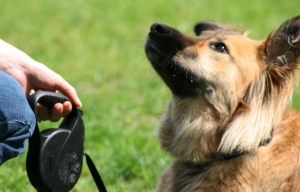Rescuing a dog is one of the most heartwarming, life-affirming things you can do. You're scrolling through shelter listings, and the next, boom, you lock eyes with your future best friend. Now, that's a serendipitous moment because those who know, know.
Despite the love-at-first-sight orchestra playing in the background, it's not all tail wags and Instagram-worthy cuddle sessions right away.
Training them isn't a walk in the park. Your patience will be tested, and yes, sometimes tools like a dog electric training collar are your only other recourse.
If you're wondering how to guide your new furry friend from shelter life to couch-snuggling sidekick, you're in the right place.
Give Them Time to Adjust
Before any formal training begins, your dog needs to decompress. Moving from a shelter or foster home into your space is a big deal for both of you.
Experts recommend following the 3-3-3 rule:
- 3 days to feel overwhelmed
- 3 weeks to start settling in
- 3 months to feel at home
During this time, maintain a calm and consistent environment. Avoid startling them with guests, loud noises, or too many commands. Instead, stick to routines like feeding at the same time every day and offering a cozy, safe spot for them to retreat to.
Let them sniff, observe, and settle. Training will be more successful once trust is established.
Start with Bonding, Not Commands
The Spruce Pets explains that the number one thing you can do to help your rescue dog learn is to build a strong bond.
That means gentle play, positive reinforcement, and a whole lot of patience.
Talk to them. Hand-feed a few meals. Play games like tug or fetch to boost confidence and communication. You're not only teaching them commands; you're showing them the world isn't so scary anymore.
Basic Training Foundations
Set Up for Success
Rescue doggies may or may not have had previous training. Some might not know what “sit” means, while others could've been punished for trying. Here's how to start:
- Keep it simple: One-word commands like “sit,” “stay,” and “come.”
- Use high-value treats: Cheese bits, freeze-dried liver, and whatever makes their tail wag.
- Limit distractions: Train in quiet spaces at first.
Consistency is your best friend here: One command, one tone of voice, one reward style. Repetition and routine help dogs feel safe and confident.
Consider a Dog Training Collar
Some rescues, specifically those with severe recall or reactivity issues, may benefit from dog electric training collars if used correctly.
Flash Dog Training points out that modern e-collars are not the cruel, outdated shock collars of the past. They deliver a low-level “tap” similar to a vibration, not pain.
When paired with positive reinforcement, e-collars can help with off-leash training, stubborn behavior, or improve focus in anxious dogs.
Always consult a certified trainer before introducing one and never use it as a punishment.
Rescue Dogs Are Smart But Sensitive
Some rescue pups have had a rough past. Barking at the vacuum? Hiding during storms? Bolting at the sound of keys? Those might be signs of trauma or fear-based behavior.
Vets recommend using desensitization and counter-conditioning to assist. That means gradually exposing them to triggers while rewarding calm behavior.
For example:
- Vacuum off? Give treats.
- Vacuum moved? More treats.
- Eventually… vacuum on? Jackpot treat party!
The key? Go slow.
Be Realistic About Setbacks
Training isn't linear. One week, your pooch might be rocking their leash manners, and the next, they're chewing your running shoes like they've never heard the word “no.”
That's okay.
Behavioral regression is common during adjustment periods. K9 Connoisseur reminds us that consistency, patience, and forgiveness are critical for rescue pups learning to trust.
Try not to take setbacks personally. Redirect, refocus, and keep going. You're building a lifelong bond, not prepping for a dog show.
Zen the Avalanche Dog
Need a little extra motivation? Zen, a former rescue, trains other rescue dogs in avalanche zones.
Rescue dogs are capable of incredible things, from therapy work to search-and-rescue missions, with the right training and love.
If you are struggling to get your pup to sit, remember: every dog starts somewhere. Also, a Phys.org study highlights that frustration and failure in dogs frequently stem from human impatience. It has nothing to do with stubbornness on the dog's part.
Be clear, be kind, and give them time to figure it out.
And, that moment when they finally wag their tail freely, look at you, and choose to come when called? That's the real reward.






